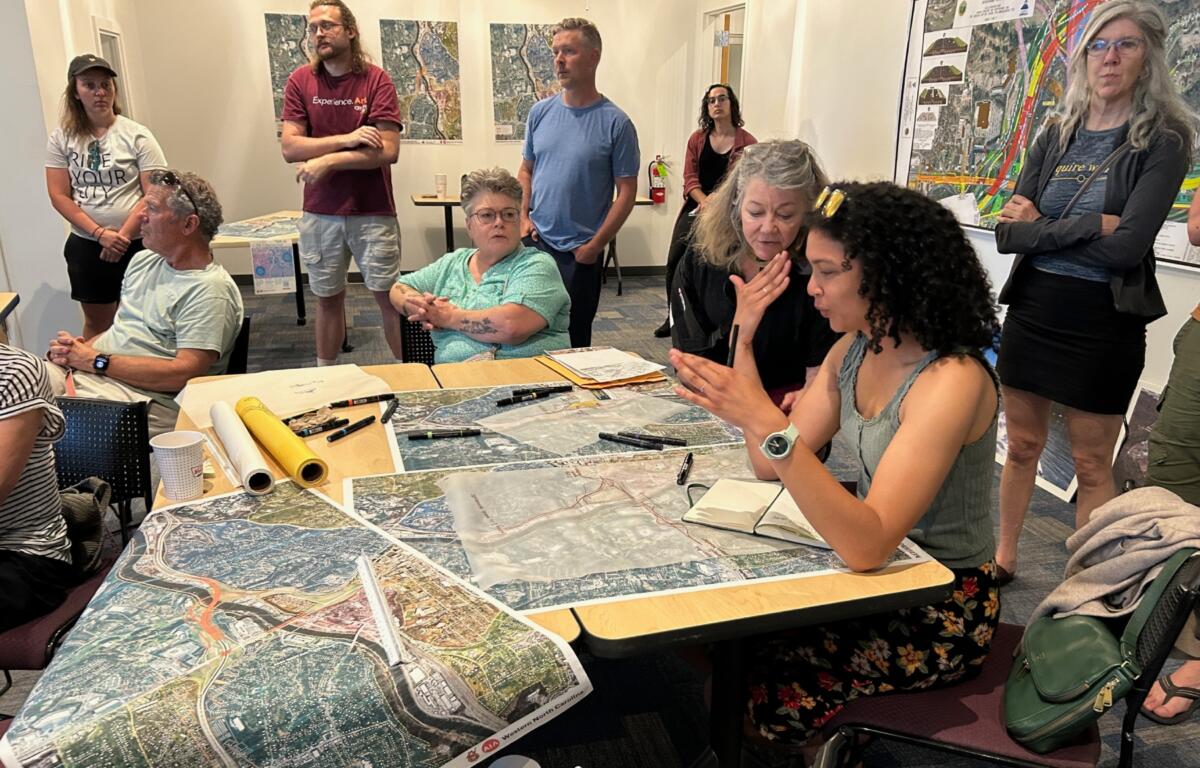ASHEVILLE, N.C. (828newsNOW) — Following a successful Community Design Charrette, the Western North Carolina chapter of the American Institute of Architects and the I-26 Citizens’ Coalition have released joint recommendations to improve the design of the I-26 Connector project through Asheville.
The groups said their proposed alternative designs offer multiple benefits, including reduced noise and air pollution, improved pedestrian and cyclist safety, stronger neighborhood connectivity, greater preservation of taxable and developable land and a smaller overall project footprint.
Key recommendations include:
Patton Avenue: The groups propose routing I-26 beneath Patton Avenue, aligning it with the existing underpass to reduce trenching and avoid disruption to existing fiber optic infrastructure. The design minimizes elevation changes and reuses current roadway structures with minor widening based on traffic projections. Community members have strongly backed this option, with a petition opposing the current overpass design collecting 1,923 signatures as of May 24.
Haywood Road: Two alternatives were proposed, both requiring that I-26 be limited to six lanes in the area:
- Option 1: Retain the existing exit infrastructure at Hanover Street.
- Option 2: Remove all I-26/240 exits to and from Haywood Road.
Both maintain the Hanover Street-Haywood Road connection and protect a vital bus corridor. Option 2 introduces a “Haywood to Patton Business Boulevard” to improve local business access while preserving homes and structures, including the Meadows building. It also creates potential for extending the Multi-Use Path to Carrier Park, connecting West Asheville, the River Arts District and downtown.
Hill Street: The groups recommend reverting to the 2020 design to avoid expanded Duke Energy Progress right-of-way claims that threaten homes near Courtland Place. The proposed revision would better serve local neighborhoods, support school bus traffic and allow for a future greenway connection to Riverside. Implementation would require relocation of power infrastructure.
I-240 footprint: The proposal calls for a six-lane maximum for the I-26 Connector to reduce the project’s scope and cost. This would preserve the Clingman Avenue access to eastbound I-240, a critical route for River Arts District and downtown commuters. The lane reduction also enables smaller bridges at Atkinson and Hill streets and creates space for roundabouts on both sides of the bridge.
The WNC AIA and the I-26 Citizens’ Coalition thanked thousands of residents who participated in the design process, as well as neighborhood associations, local officials and volunteer design professionals.
“We look forward to collaborating with NCDOT to review and evaluate our recommendations as the design is finalized,” the organizations said in a joint statement.
Sonia Marcus, a resident of the EWANA neighborhood and member of the Citizens’ Coalition, voiced concern about the proposed Patton Avenue overpass.
“I’m very concerned about the increased noise and air pollution of the Patton overpass which will run right behind my home and significantly diminish quality of life for all my neighbors,” Marcus said. “But I’ve seen over and over again during the 12 years I’ve lived here that there is a deep well of community spirit and wisdom here in Asheville that can be drawn upon in times of need. This is one of those times.”
N.C. Department of Transportation officials confirmed they had received the recommendations and plan to meet with the groups next month.
“We certainly consider all input from citizens and local officials when it comes to any project,” NCDOT communications officer Stephanie Johnson said. “We are grateful for their input. We will continue working with city of Asheville staff, Buncombe County staff and stakeholders as this project develops.”
PAST COVERAGE:
Residents question transparency, impact of I-26 Connector changes


